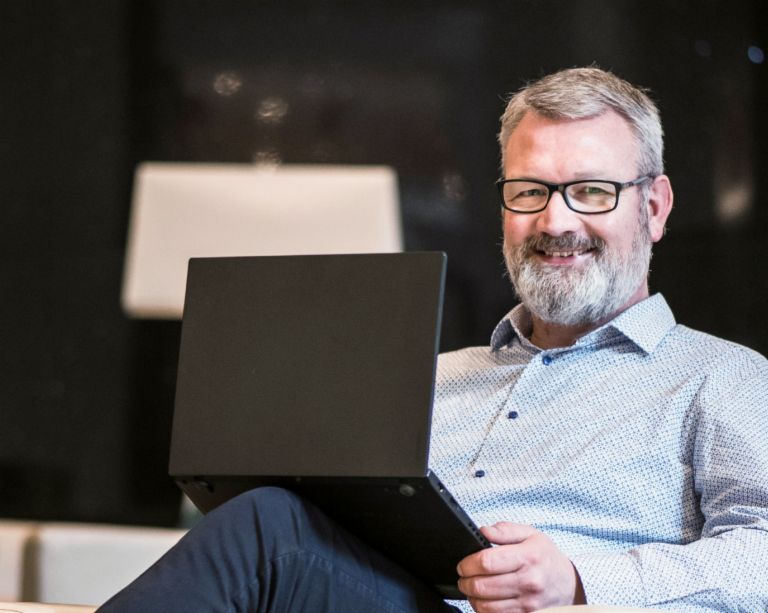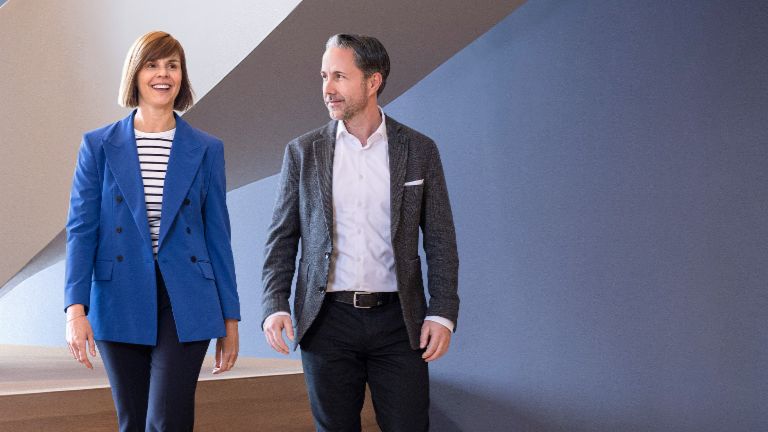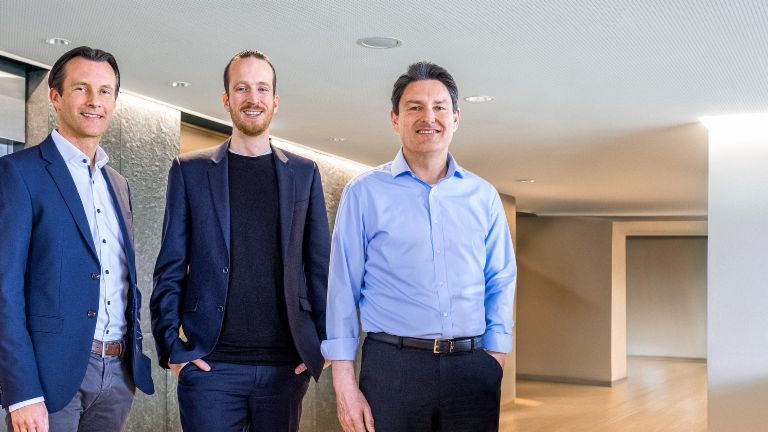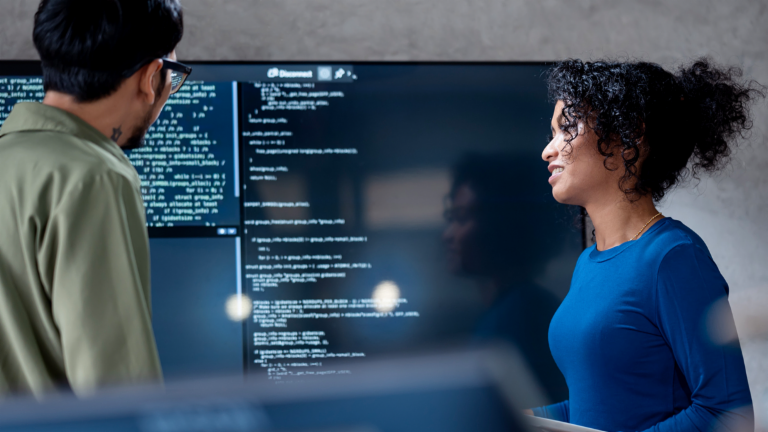Working as individuals but all on the same page: the EOS Kollecto+ Board.
An international team is developing the new EOS software Kollecto+. The participating countries agree on requirements and priorities in the Kollecto+ Board. But before that there are basic considerations to be met. How do we get everyone to join us on our journey? One approach is inner source.
- Kollecto+ is a new cross-border EOS software for receivables management.
- The international committee coordinating the process recently met in Vienna.
- At the meeting, the principle of essentially developing the software centrally was abandoned, at least partially, under one condition.

As he entered the simple conference room on the ground floor of a Viennese airport hotel, Thomas Walter was well aware that this was an important date for EOS operations in Eastern Europe. The common topic that brought together the 15 colleagues from the region as well as senior executives from Hamburg was Kollecto+, the platform designed to replace the previous EOS Kollecto software in 12 countries.
The debt collection system would require a new kind of international collaboration. This much was clear to Walter, representing EOS Technology Solutions in Hamburg, as it was to all other participants. In any case, Marwin Ramcke, Director responsible for Eastern Europe, made clear at the start of the meeting that he was 100% behind the new software and hoped that everyone would go along with the centralized approach of Kollecto+.
Kollecto+ is set to succeed the previous software Kollecto in 12 countries. Until now, it has been used by nine EOS national subsidiaries to manage receivables and secured debt purchases. Kollecto+ builds on the previous system, but is set to eliminate one of its weaknesses. In future, each company will no longer use a desktop-based national version. Instead, Kollecto+ will work across borders, because the software is web-based and cloud-ready. It is intended to provide a uniform, collective system that allows for a lot of specific configurations.
More about the project:
12 countries, one platform: How EOS in Eastern Europe is a role model for collaboration.

Don’t just preach cultural change, put it into practice.
The objective of the board meeting: to get the backing of all national subsidiaries for the project. “This is EOS cultural change live in action, We are open to new things and everyone sees the need for it,” says Walter about the day-long meeting. “And we are working together to make sure that our vision doesn’t remain just that.” Obviously this will take some effort – and that’s the reason for Ramcke’s plea.
Initially, the meeting in Vienna addressed a fundamental question, relates Walter: “How do we ensure that all countries are on the same page?” Because whereas until now, EOS national subsidiaries were able to develop new functions or tweak existing ones depending on their own needs and individual time and cost budgets, they are now supposed to sit down at the same table to decide on a centralized development that benefits all participants. “In the longer term this saves costs,” says Walter. However, it requires the companies to constantly reach agreement on collective steps. It should no longer always be the loudest or biggest that gets served first.”
All national subsidiaries need to be on the same page.
As a solution, the chief programmer from Bucharest suggested making Kollecto+ into a kind of inner-source system. This would allow national IT departments to work on the program individually as long as they share their results with all the others. The Kollecto+ Board found this to be a constructive idea. “With the inner source suggestion we had already agreed unanimously to move away somewhat from the principle of centralized further development,” reports Walter. “But only on condition that all national developments are made available to the entire system.”
With the vision of international collaboration in mind, Thomas Walter had previously met with around 10 colleagues from the Kollecto+ Board three times. Following a launch meeting in Warsaw in December, there were also two virtual meetings to create an orderly structure for the cross-border knowledge-sharing process. Further meetings are being planned. Because the collective vision for Kollecto+ is not yet a foregone conclusion, says Walter. However, he is delighted that the Kollecto+ Board is obviously functioning as planned: “Already you can feel the new EOS spirit.”
Photo Credits: Achim Multhaupt
Explore more from EOS



